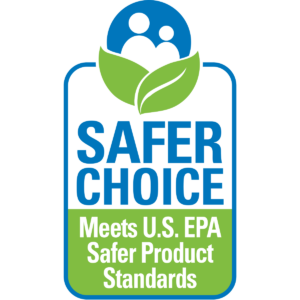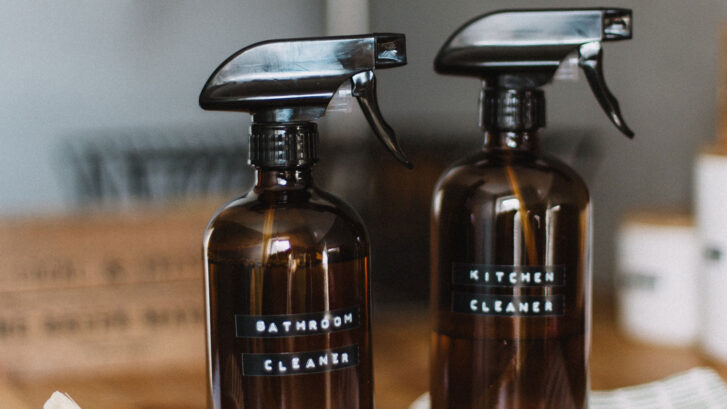Is a Clean Home Dangerous to Your Health?
You try to keep your family healthy in every way you can, including ensuring that the environment in your home is as clean as possible. But our concierge family practice doctors at MD 2.0 in Jupiter want to caution you that the cleaning products you may be using come with a host of possible dangers to your health and that of your family.
Chemicals damage lungs
One 2018 study by researchers at Norway’s University of Bergen found that regular use of cleaning sprays was as damaging to lung function as smoking a pack of cigarettes a day. Of the 6,235 participants in the 20-year-long study, those who used the most cleaning products most frequently showed a marked decrease in lung capacity, along with increased rates of asthma.
This tracked with a French study released a year earlier which found that nurses who used disinfectants to clean surfaces at least once a week had a 24-32 percent increased risk of developing lung disease.
Other studies have found dangers associated with modern chemical products we use regularly. According to the American Lung Association (ALA), cleaning supplies and household products containing volatile organic compounds (VOCs) can include, but are not limited to:
- aerosol spray products, including health, beauty, and cleaning products
- air fresheners
- chlorine bleach
- detergent and dishwashing liquid
- dry-cleaning chemicals
- rug and upholstery cleaners
- furniture and floor polish
- oven cleaners
The ALA reports that VOCs and other chemicals released when using cleaning supplies contribute to chronic respiratory problems, allergic reactions, and headaches.
“Recent research has found that even natural fragrances in cleaning products, particularly in air fresheners, may react with high levels of ozone from indoor sources (for example, from some air-cleaning devices) or from outdoor air to form formaldehyde, a known human carcinogen,” the ALA says.
Other health hazards
And it’s not just lung damage that is connected to commercial cleaning products. Many of them contain myriad dangerous chemicals that can impact your family’s health.
For example:
Phthalates are commonly found in air fresheners and cleaning and sanitizing products, and the Environmental Protection Agency (EPA) list them as endocrine disruptors. These are substances that can disrupt hormone function even in very small amounts, causing reduced fertility in women and men, early puberty in girls, and increases in cancers of the breast, ovaries, and prostate, among other impacts.
“Research indicates that phthalates [also] increase the risk of allergies and asthma and can affect children’s neurodevelopment and thyroid function,” according to the EPA.
Tricolsan, another common ingredient in antibacterial cleansers, has been listed by the EPA as a suspected endocrine disruptor, and can lead to the development of antibiotic-resistant bacteria.
Terpines are chemicals found in pine, lemon, and orange oils that are used in many cleaning and disinfecting products. The EPA reports that they can contribute to environmental smog and the formation of formaldehyde, which causes cancer and numerous other maladies including joint pain, depression, headaches, chest pains, ear infections, chronic fatigue, dizziness, and loss of sleep.
Safer alternatives
Many people believe that they need antibacterial cleaners to keep their family safe from germs. But research has proven that antibacterial products are no more effective than thorough washing with plain soap and water.
According to the ALA, “As a safer cleaning alternative, warm water and soap will often do the trick, especially at home. Baking soda is good for scrubbing. A mix of vinegar and water can clean glass.”
Ironically, these old-fashioned cleaning methods can often do a better job than pricey commercial cleaners. But if you choose to continue using manufactured products, there’s some good news.
Until now, manufacturers have not been required to list ingredients on their labels. Fortunately, California passed a law in 2017 that will require cleaning products to list their contents, both on the label and online beginning this year. So now you’ll be able to see some of the many toxic chemicals found in these products.
 In addition, the EPA has made it easier to find products that represent safer alternatives through the development of its Safer Choice label. Products displaying this label (shown right) helps consumers identify products that contain safer chemical ingredients without sacrificing quality or performance.
In addition, the EPA has made it easier to find products that represent safer alternatives through the development of its Safer Choice label. Products displaying this label (shown right) helps consumers identify products that contain safer chemical ingredients without sacrificing quality or performance.
The label means that EPA scientists have rigorously reviewed every ingredient in the product to ensure it meets the stringent Safer Choice criteria to protect human health and the environment.
More than 2,000 products currently qualify to carry this label, and the EPA’s website offers a page that allows consumers to search for products that meet the Safer Choice Standard.
We want to help keep you and your family healthy, so if you have any questions about this or any other health-related topic, don’t hesitate to contact us.

